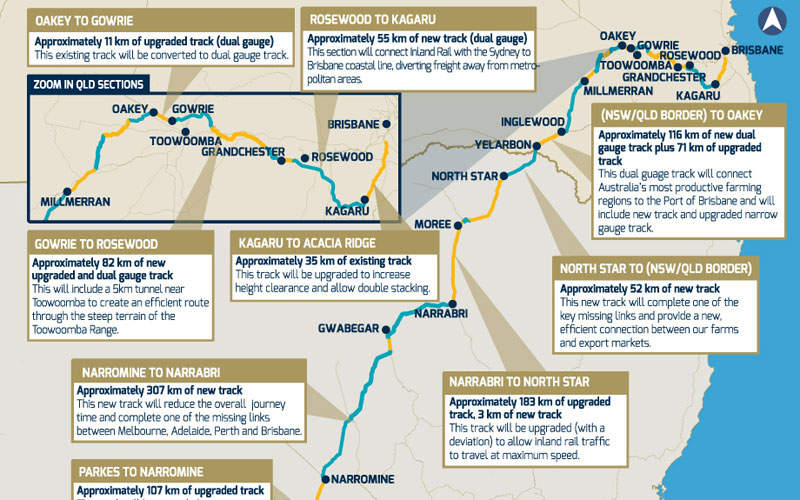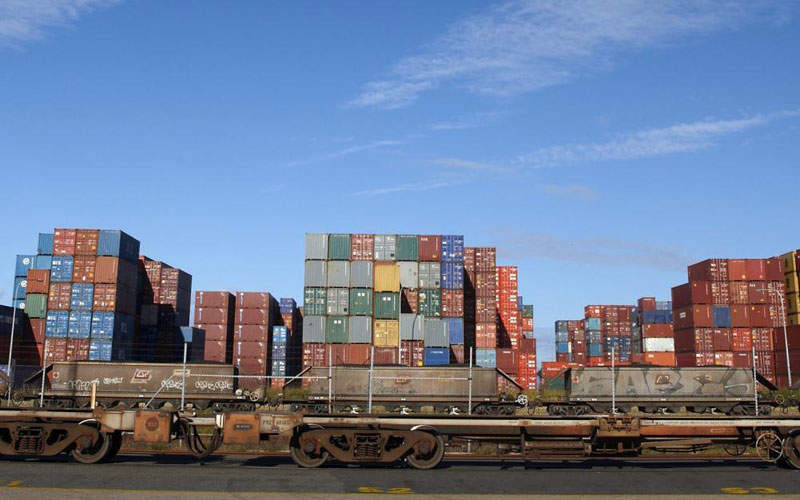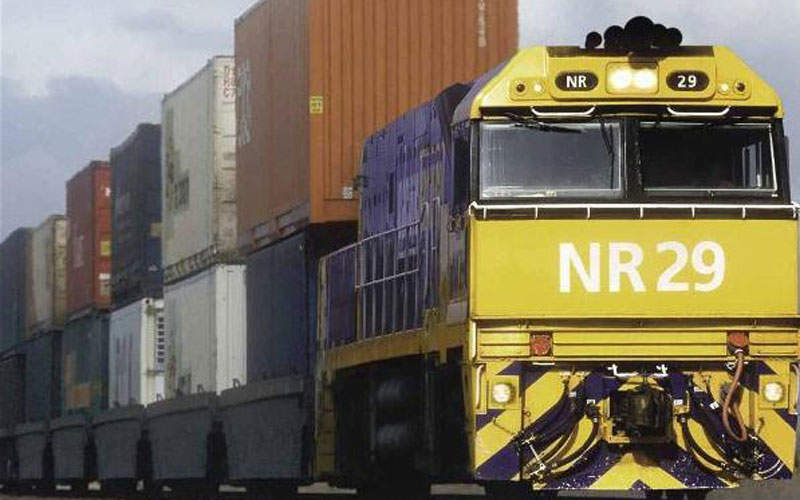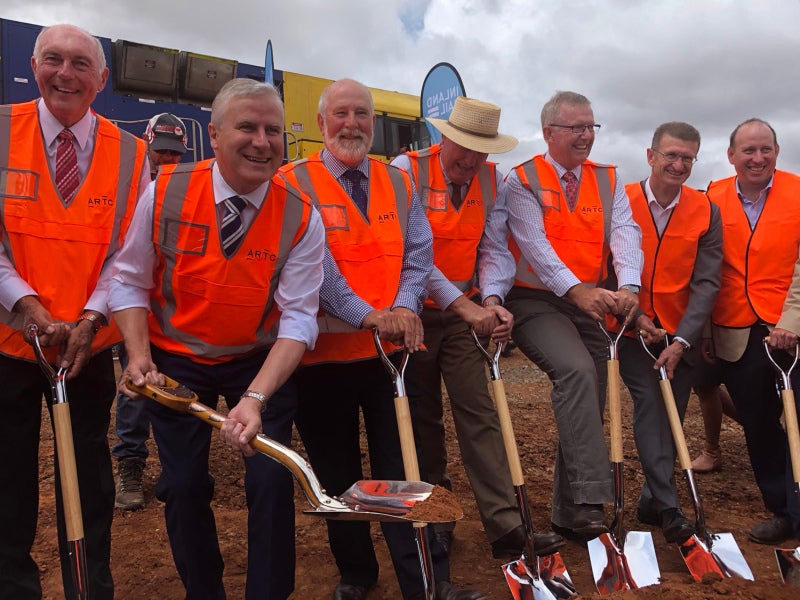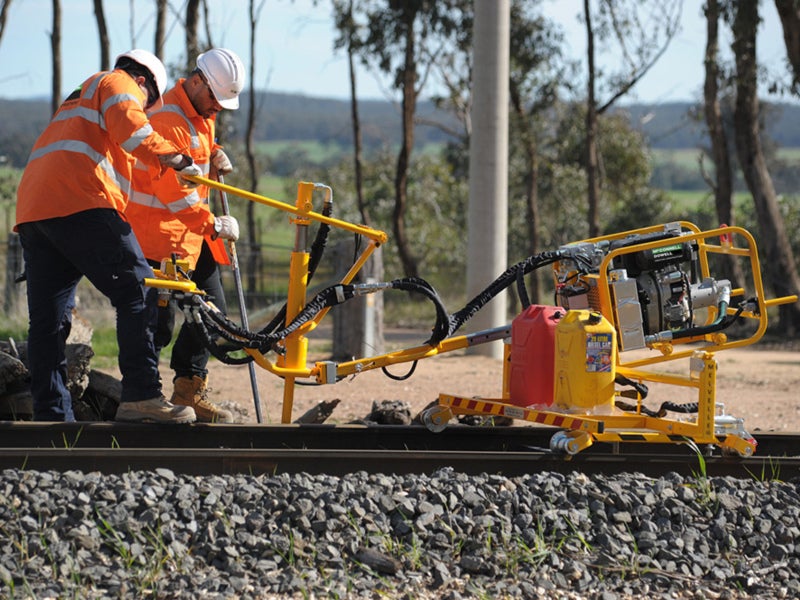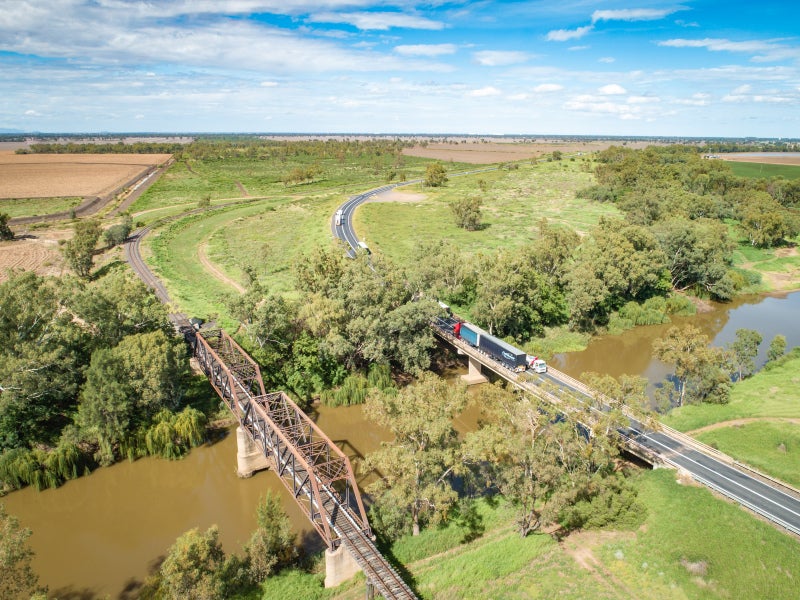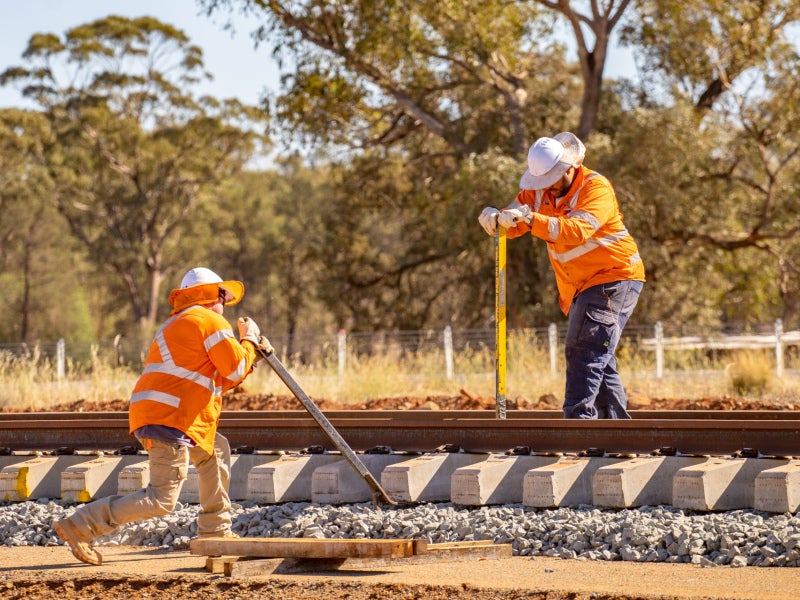Inland Rail is a freight rail corridor being built between Melbourne and Brisbane that will further connect south-east Queensland by rail with Adelaide and Perth in Australia. The corridor will traverse three states, namely Victoria, New South Wales (NSW) and Queensland.
The long-term project involves 13 individual projects and anticipates a growth in freight volumes by 12 million tonnes a year by 2050.
It will enable Queensland’s interstate rail freight to bypass the busy greater Sydney rail network and decrease the freight transit time from Melbourne and Brisbane to less than 24 hours, reducing the travel time by approximately ten hours. The overall investment in the project is estimated to be A$14.5bn ($10.89bn).
The Australian Government announced an additional equity commitment of A$8.4bn ($6.21bn) for the full completion of the project in its 2017-2018 budget. The government had earlier committed A$900m ($665.85m) towards planning and land acquisition.
The project is expected to generate approximately A$18bn ($12.85bn) worth of direct and indirect economic benefits, 21,500 direct jobs during the peak construction phase, and approximately 700 jobs when it starts operations. It will also help to offset more than 750,000t of carbon dioxide (CO2) emissions a year.
The Parkes to Narromine section of the rail corridor was completed and became operational in September 2020. The corridor is expected to be completed by 2027.
Project background
The first proposal to construct a rail freight corridor between Melbourne and Brisbane was made in 1902. After several suggestions over the years, the North-South Rail Corridor Study was announced in 2005 and was completed the following year. A number of potential routes were considered, before settling on the far western corridor through Parkes.
The second study, named the Melbourne to Brisbane Inland Rail Alignment Study, was announced in 2008 and completed by the Australian Rail Track Corporation (ARTC) in 2010. The ARTC further examined the 2006 proposal and developed the current alignment.
In November 2013, the Australian Government formed the Inland Rail Implementation Group to oversee the development of a business case and a ten-year delivery plan for the project entrusted to ARTC.
The Inland Rail project gained impetus in 2014 following a A$300m ($261.37m) grant by the government. Pre-construction works such as the detailed corridor planning, obtaining of environmental and planning approvals, community consultations, and land acquisitions were initiated subsequently.
The business case and ten-year delivery plan studies were completed in September 2015.
Inland Rail route and design details
The proposed 1,711km-long route comprises 293km of existing corridors that will be upgraded to main line standards, 709km of existing tracks that will be enhanced to enable double stacking, and 709km of the corridor that will involve the installation of new tracks. The route starts from Tottenham in Melbourne, and culminates at Acacia Ridge in Brisbane.
New track will be constructed for the remaining 500km corridor section. The greenfield sections will be from Illabo to Stockinbingal, Narromine to Narrabri, North Star to the New South Wales / Queensland border, and throughout the majority of the Queensland section to Kagaru.
Overall, the corridor will entail 1,071km of tracks and sleepers, 1,667km of fencing, 35 passing loops, 22 bridges, 908 culverts, 337 level crossings, 25 grade separations, 18 viaducts, and five tunnels. The 128km section between Gowrie and Kagaru in Brisbane is expected to be the most complex as it includes more than 8km of tunnels to be built through the Toowoomba Range.
The route will also be designed to be fully interoperable with the interstate mainline standard gauge network to provide connectivity to the Queensland narrow gauge regional network. The signalling system envisaged for the project is the advanced train management system (ATMS).
Construction details
The ground-breaking event for the project took place at Parkes in Central-West New South Wales in December 2018. Construction took place on the section between Parkes and Narromine and it involved the upgrade of 98.4km of existing track. The rail tracks, along with rail formation and supporting structures along the rail corridor, were fully rebuilt.
The Parkes North West Connection will directly link south-east Queensland, Adelaide, and Perth, upon completion of the Inland Rail project.
Construction of the Narrabri-North Star section, which is the second section of the freight line, officially began in November 2020.
Works related to the section include upgrading 186km of existing track and the construction of 2.3km of new track.
Phase 2 of the section will include the upgrade of 13km of track between Alice Street, Moree across the Mehi-Gwydir floodplain, and the eastern side of the Moree Gun Club, along with the laying of 1.6km of new track at Camurra, north of Moree.
Inland Rail received approval for two work packages on the Stockinbingal to Parkes section in December 2021.
The project will enable the movement of double-stacked freight trains and enhance the capacity of the section. Construction of the section is expected to begin in late 2022. It will include the construction of a 2.21km crossing loop at Daroobalgie Road north of Forbes, and lowering the main line track beneath Wyndham Avenue road bridge to increase the vertical clearance to 7.1m to allow the movement of double-stacked freight trains.
In February 2021, the Narrabri Shire Council Floodplain Risk Management Committee filed its response to the environmental impact statement (EIS) report on the project to the NSW Department of Planning, Industry and Environment.
It opposed the route proposed by Inland Rail for the Narromine to Narrabri (N2N) section comprising 306km, stating that the route immediately downstream of the Narrabri Township poses potential flood risks to the Narrabri township. The committee added that a small modification to the route can be much more beneficial.
After consulting with the local community and key stakeholders, in June 2022, Inland Rail said that it is working on the feedback from the EIS report and will submit a detailed final report in the coming months.
Contractors involved in Australia’s largest freight rail project
In July 2015, GHD was awarded the contract to provide environmental and engineering consultancy services for the initial stages of the project.
Macquarie Capital was appointed in December 2015 as the business adviser, whereas Herbert Smith Freehills was appointed as the legal adviser for the ARTC scoping study.
The SMEC and Arup joint venture (JV) was awarded the technical and engineering advisory contract for the project in early-2016 while GHD, Parsons Brinkerhoff, AECOM, ARUP and Jacobs were contracted for the initial environmental investigations and engineering design.
Liberty OneSteel Whyalla Steelworks received a contract from ARTC for the supply of 14,000t of steel rail for the Parkes to Narromine section of the project in December 2017.
ARTC appointed INLink, a JV comprising Fulton Hogan and BMD Constructions, to build the first section of the project between Parkes and Narromine in NSW. Awarded in October 2018, the contract was worth more than A$300m ($213.8m).
SNC-Lavalin and Turner & Townsend were engaged to provide programme management office (PMO) services for the Inland Rail project in August 2019.
In November 2020, ARTC awarded a contract worth more than A$650m ($473.7m) to Trans4m Rail, a JV between John Holland and SEE Civil, for the construction of the section between Narrabri and North Star.
McConnell Dowell, a construction company based in New Zealand, received a contract worth A$16.4m ($11.6m) to provide the first phase of design and early works for the project in Victoria in December 2021.
The company is responsible for design and preparatory works including minor civil works, overhead wiring, and signal gantry installation at four sites on the North East Rail Line. McConnell Dowell, and Aurecon, who were appointed as the design subcontractors, are overseeing the design of new bridges, train station upgrades, and track lowering at the four sites.
Regionerate Rail, a consortium of GS Engineering and Construction, Clough, Webuild, Plenary Group, and Service Stream, was selected by ARTC in March 2022, for a contract worth more than A$5bn ($3.69bn) to develop the section between Gowrie and Kagaru.
Vossloh’s subsidiary Austrak was contracted to supply 1.3 million sleepers for the project in February 2022 while Rocla received an order to deliver 200,000 concrete sleepers for the first stage of the project in June 2018.
The ACACPB JV, a 50-50 JV between CPB Contractors and ACCIONA Construction Australia, was appointed for the planning and development of civil works of the Narrabri-Narromine section in September 2021.
Martinus was named the preferred contractor for the construction of approximately 570km of railway between Narromine and Moree in NSW, and between NSW and Gowrie in Queensland, in December 2021.
ZAMR Engineering, North Projects, Barker Ryan Stewart, APP Corporation, Agonis Group, Interface Rail Engineering, Hatch, Kellogg Brown and Root, Proterra Group, BG & E, and Arcadis Australia Pacific were appointed as panel members to provide independent verifier services for the project.
Other contractors involved in the project are Tactix Group, Level Crossing Safety Management Services, Chandler McLeod, Premise Australia, PricewaterhouseCoopers Consulting (Australia), SNC Lavalin Rail & Transit, WSP Australia, and Jacobs Group (Australia).

